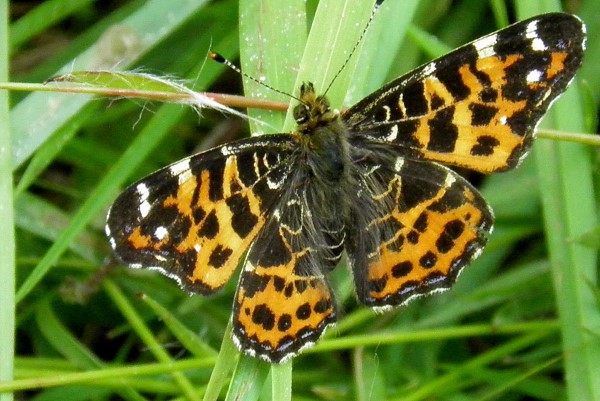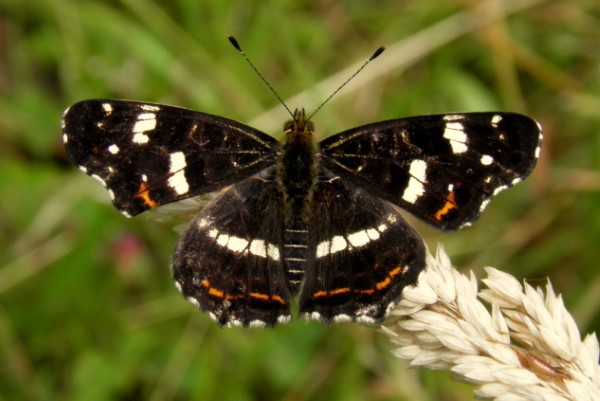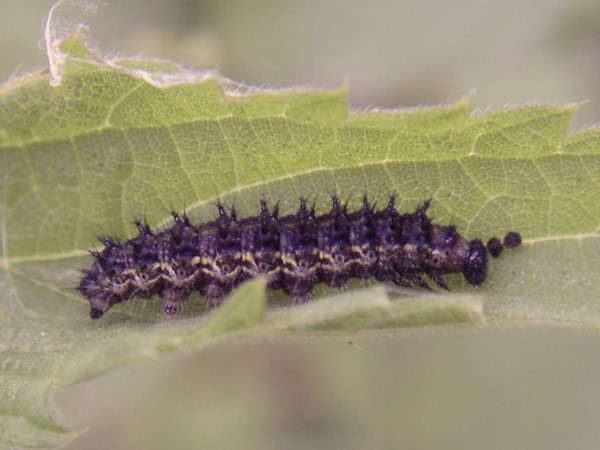Map Butterfly - Araschnia levana
Phylum: Arthropoda - Class: Insecta - Order: Lepidoptera - Family: Nymphalidae

This beautiful butterfly gets its common name from the intricate geographical-map-like patterning on the undersides of its wings. It is a species that displays the most striking seasonal dimorphism, with the first (spring) brood very different in appearance from the second (summer) brood.
Description
The Map is a medium-sized butterfly (small for a Nymphalid) with a wingspan usually within the range of 3.5 to 4cm for females and 2.8 to 3.2cm for males. Above and immediately below are views of the upperwings and underwings of first-brood (nominate form) Map butterflies Araschnia levana f. levana. Because of the smallish size and the dominant orange colouring of these spring butterflies, they are sometimes mistaken for fritillaries.

The summer-brood form, Araschnia levana f. prorsa (pictures below), has white stripes on a dark background with very little orange colouring; this, at least from a distance, makes it easily mistakeable for a diminutive White Admiral Limenitis camila.

The underwing patterning of second-brood (prorsa form) Map butterflies is also quite distinctive, as seen here:

Habitat
As well as open deciduous woodland, parks, hedgerows and tree-lined riverbanks, the Map butterfly can also be found in scrubby wasteland and fallow farmland where Stinging Nettles grow unchecked.
Distribution
Despite several failed attempts at its introduction over the past century or so (actions that are now forbidden under the Wildlife and Countryside Act), the Map butterfly is not found in Britain and Ireland. Its native range covers much of mainland Europe as far north as southern Finland and southwards down to the Iberian Peninsula and the Mediterranean. To the east, Map butterflies are also found across much of Central Asia and in parts of the Far East, including Korea and Japan. Picture shown on this page were taken in the Pays Basque region of France.
Lifecycle
The larval foodplant used by this butterfly is Stinging Nettle Urtica dioica. Throughout most of the Map butterfly's geographical range the first brood emerges from over-wintered pupae in spring, and a second brood occurs in high summer. (In the far north of its range, the Map has just one brood, while in some southern locations a third brood is reported to occur.)

The Map's caterpillar is blackish with orange-tinged multi-branching spikes, and a yellow patterning appears along its back and sides as it matures. The eggs are greenish oblate spheroids and are laid in strings one upon another that hang down catkin-like and resemble the flowers of the nettles to which they are attached. This feature may even give them some degree of protection from (short sighted!) predators. The brown pupae spend the winter attached to dead stems of the larval host plant.
Acknowledgements
This page includes pictures kindly contributed by Steve Jelf.
Studying butterflies and moths...
Excited at the prospect of flyfishing? So are we, and we're pretty sure you would find the Winding River Mystery trilogy of action-packed thrillers gripping reading too. Dead Drift, Dead Cert, and Dead End are Pat O'Reilly's latest river-and-flyfishing based novels, and now they are available in ebook format. Full details on our website here...
Buy each book for just £4.96 on Amazon...
Please Help Us: If you have found this information interesting and useful, please consider helping to keep First Nature online by making a small donation towards the web hosting and internet costs.
Any donations over and above the essential running costs will help support the conservation work of Plantlife, the Rivers Trust and charitable botanic gardens - as do author royalties and publisher proceeds from books by Pat and Sue.
